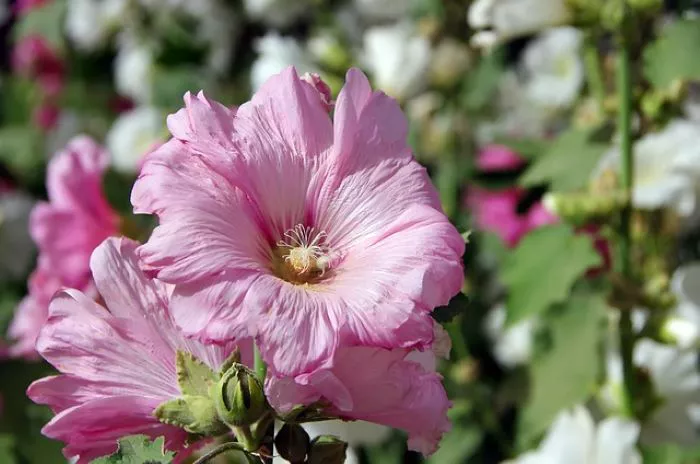Hibiscus plants are renowned for their stunning, large blooms that can add vibrant color to any garden. However, many gardeners struggle to get their hibiscus plants to flower as abundantly as they desire. Understanding the factors that influence flowering is essential for promoting healthy blooms. This article will provide a comprehensive guide on how to encourage more flowers on your hibiscus plants through proper care and maintenance.
Understanding Hibiscus Varieties
The first step in promoting flowering in hibiscus is understanding the different varieties. There are two main types of hibiscus commonly grown: tropical hibiscus and hardy hibiscus.
Tropical hibiscus, often known for their large and colorful flowers, thrive in warm climates. They require full sun and are sensitive to cold temperatures. Hardy hibiscus, on the other hand, can withstand colder weather and are suitable for temperate regions. Each variety has its own blooming characteristics, so it is crucial to select a type that suits your local climate and gardening conditions.
Providing Adequate Sunlight
One of the most important factors for encouraging hibiscus to flower is sunlight. Hibiscus plants thrive in full sunlight, requiring at least six to eight hours of direct sunlight each day. Insufficient light can lead to poor blooming.
When planting your hibiscus, choose a location that receives ample sunlight throughout the day. If you are growing hibiscus in pots, consider moving them to a sunnier spot if they are not blooming well. Avoid planting hibiscus in shaded areas, as this can significantly reduce flower production.
Watering Practices
Proper watering is critical for the health and flowering of hibiscus plants. Hibiscus prefers consistently moist soil but does not tolerate waterlogged conditions.
Water your hibiscus deeply and regularly, especially during dry spells. The top inch of soil should feel dry before you water again. During the blooming season, which typically occurs in late spring and summer, ensure your hibiscus receives enough water to support flower development.
As the temperatures cool in the fall, you can reduce the frequency of watering. Always check the soil moisture before watering to avoid overwatering, which can lead to root rot.
Fertilization for Flowering
Fertilization is another key factor in promoting blooms on hibiscus plants. A balanced fertilizer with an N-P-K ratio of 10-10-10 or 15-30-15 is ideal for encouraging flowering.
Apply fertilizer every four to six weeks during the growing season, starting in early spring. Follow the recommended application rates on the fertilizer package to avoid over-fertilizing. Excessive fertilizer can lead to lush foliage growth at the expense of flowers.
Consider using a slow-release fertilizer for a more consistent nutrient supply. Organic fertilizers, such as compost or well-rotted manure, can also provide essential nutrients while improving soil health.
Pruning for Better Blooms
Pruning is an important practice that can enhance flower production. Regular pruning encourages new growth, which is where flowers will develop.
Prune your hibiscus in late winter or early spring before new growth begins. Remove any dead or damaged branches and thin out crowded areas to improve air circulation. This will help the plant focus its energy on producing flowers rather than maintaining old growth.
When pruning, make cuts just above a leaf node or bud to encourage branching. This technique promotes a bushier plant, which can lead to more flowering sites.
Managing Pests and Diseases
Pests and diseases can hinder the flowering of hibiscus plants. Common pests include aphids, spider mites, and whiteflies. Regularly inspect your plants for signs of infestation, such as discolored leaves or webbing.
If you notice pests, treat them promptly with insecticidal soap or neem oil. These treatments are effective and less harmful to beneficial insects.
Diseases such as root rot, powdery mildew, and leaf spots can also affect flowering. Ensure good air circulation around your plants and avoid overhead watering to reduce the risk of fungal diseases. If you notice any signs of disease, remove affected leaves and treat the plant with appropriate fungicides if necessary.
Encouraging Pollinators
Pollinators play a vital role in the flowering process of hibiscus plants. Bees, butterflies, and hummingbirds are attracted to hibiscus flowers and help with pollination.
To encourage these beneficial creatures, plant a variety of flowering plants nearby that bloom at different times throughout the season. This will create a diverse habitat that attracts pollinators. Avoid using pesticides that can harm these essential insects.
Conclusion
Getting flowers on your hibiscus plants requires attention to several key factors, including selecting the right variety, providing adequate sunlight, watering correctly, and proper fertilization. Regular pruning and pest management are also crucial for promoting abundant blooms. By following these guidelines, you can enjoy a thriving hibiscus plant that produces beautiful flowers throughout the growing season. With patience and care, your hibiscus will reward you with vibrant blooms that enhance your garden’s beauty.


